The last time I tested a battery-powered presence sensor, I was pleasantly surprised by its performance. I’m referring to the Tuya ZG-204ZM, which turned out to be really capable for what it was, highly considering price as a factor. It used a PIR motion sensor to wake up the mmWave radar and keep it powered on as long as there was human presence. However, there has been mixed experiences with this device as it appears to have some hardware variations floating the market. Read the full review and comments to learn more if you are curious.

In this review, I’ll be disassembling, testing, and integrating Xiaomi’s new battery-powered presence sensor, labelled as model XMOSB01XS. This device runs on a single button cell battery, and relies on the same PIR + mmWave logic, boasting a lifespan of up to 3 years! The device costs around $25 on AliExpress.
Technical Specification
- Name: Xiaomi Human Presence Sensor
- Model: XMOSB01XS
- Protocol: Bluetooth 5.0 (Bluetooth Low Energy)
- Battery Type: CR2450
- Battery Life: 3 years
- Illuminance Sensor: Yes
- Motion Detection: 6 meters
- Occupancy Detection: 4 meters
- Detection Angle: 130°
- Operating Temperature: -10C° ~ 45C°
- Operating Humidity: 0-95% RH
- Dimensions: ⌀42.6×50.5mm
- Price: $25 | AliExpress | AliExpress
Teardown and Package Contents
This battery-powered Xiaomi Human Presence Sensor ships in a small box containing the device itself, a magnetic wall mount and a user manual. Everything is packaged neatly and tightly inside the box. The manual and info printed on the box is in Chinese without English translations.

The device is manufactured really well, feeling compact and heavy when handles. The magnet is very strong and snaps into place instantly, allowing for a wide range of rotation to position the sensor toward the detection area. The battery compartment on the back requires a coin to open, which took some serious twisting to get it to pop off. It was almost glued shut!
The sensor is powered by a single button cell CR2450 battery which can keep it going up to 3 years, according to the manufacturer.

After some pulling and prying apart, I managed to disassemble the device and get to the internals. The Fresnel lens for the PIR uses a convex design facing the room. As this is a combo device (PIR + mmWave), my assumption is that it operates on a simple logic: PIR wakes up the mmWave when it’s needed and it goes to sleep when it’s not. This allows the device to have such a good battery life.

The PCB is a recognizable Xiaomi/Aqara black color, with the PIR sensor mounted on the front. This sensor uses the EFR32BG22 [Datasheet] Bluetooth mesh module by Silicon Labs as a communication chip. This particular SoC is characterized with “industry-leading” battery efficiency and a maximum power output of 6dBm. It is specifically designed for Bluetooth LE data transfers and Bluetooth mesh low power node applications, which suits this human presence sensor perfectly.

The actual mmWave presence sensor used in the Xiaomi XMOSB01XS is manufactured by SkyRelay, exact model RC2412 [Datasheet]. The RC2412 is a high-performance, industrial-grade millimeter-wave radar SoC that operates within the 23.5GHz to 25GHz frequency range. It features a 1T2R configuration, meaning one transmit and two receive RF transceiver channels. This chip allows precise measurements of distance, speed, and azimuth for multiple targets across short, medium, and long ranges. However, this implementation is not present in the Xiaomi sensor, as only a single target can be tracked.

Home Assistant Integration
The Xiaomi XMOSB01XS Occupancy Sensor is supported in Home Assistant through the official Xiaomi BLE Integration. Since this is a BLE device, you will need a Bluetooth adapter accessible to Home Assistant in order to use this device. My personal preference is to capture BLE packets with an ESP32 board, and simply proxy the advertisements to Home Assistant. This is a simple configuration that you can add to any ESP32 node and achieve this:
bluetooth_proxy:
active: true
esp32_ble_tracker:
scan_parameters:
interval: 320ms
window: 320msHowever, Xiaomi uses an encryption protocol to secure the advertised data for their Bluetooth devices. This requires a 32-character hexadecimal (16-byte) key to decrypt the data and integrate it with Home Assistant. There are several ways to obtain the bind key, with the simplest being extracting the keys from Xiaomi Cloud using a token extractor tool. Here’s how to achieve that:
- Download the Mi Home app from the App Store | PlayStore
- Make an account and set the server to Chinese Mainland (important!)
- I highly suggest you use a throwaway e-mail account since you will not be needing the app afterwards
- Pair the Xiaomi Human Presence Sensor via Bluetooth
- On your computer, download and run the token_extractor tool
- Windows: token_extractor.exe
- Linux terminal:
bash <(curl -L https://github.com/PiotrMachowski/Xiaomi-cloud-tokens-extractor/raw/master/run.sh)
- Enter your login credentials in the terminal window
- Select
cnas a server and wait for the login - The tool will print the BLE KEY in the terminal:

- Copy and save all device info in .txt file somewhere
- Open Home Assistant and wait for the device to be auto-discovered

- Alternatively, navigate to Settings > Devices & Services > Add Integration
- Select Xiaomi > Xiaomi BLE > Select the device from the list
- At this point, Home Assistant should ask you to input the BLE KEY
- Copy paste the full key and click confirm
- Done

If you receive a warning that the device hasn’t broadcasted anything since being discovered, it’s due to a weak battery. This sensor is typically very noisy and should broadcast BLE messages frequently. Additionally, if you successfully integrate the device but only see the signal strength or illuminance sensors available, it likely indicates a voltage drop in the battery, meaning it needs to be replaced. Save yourself the frustration—just replace the battery!
Testing Performance
To test the performance of this device, I installed it in my office like most other presence sensors I review. As this device does not have any configuration settings, everything is left at default and as is. I installed a fresh battery, set it to overlook the entrance and office desk and logged the events in Home Assistant.
Even though I mentioned it a couple of times, It’s important to understand the operation logic of this device and why it has such a good battery life. Here’s what happens when movement is detected:
- The PIR sensor serves as the first line of detection. It continuously monitors the area for movement. When it detects motion, it triggers the mmWave sensor to “wake up.”
- Once activated, the mmWave sensor starts scanning the area for any ongoing movement. It can detect small movements that the PIR sensor will miss, such as a person remaining stationary in a room. The mmWave sensor continues to scan as long as it senses someone is present. During this time, it is operating in-line with the PIR sensor which keeps it alive on motion and reduces the amount of false negative triggers. When the mmWave sensor no longer detects any movement (indicating that the space is empty), it goes back to sleep to conserve energy.
- This even leaves only the PIR sensor active again, ready to detect the next motion event. When the PIR sensor detects new movement, it wakes up the mmWave sensor again, and the cycle repeats.
The initial movement detection is instant, changing state to occupied immediately as I enter the room. There is no separate movement entity, both motion and occupancy are combined into one sensor in HA and conditioned by the operation logic explained above.

At a distance of 0 to 4 meters, the devices detects static presence perfectly. There are no false negative events and the status remains occupied with me being completely still in the room. Sitting at the desk at about 1 meter or at the office sofa at around 4, makes no difference and the sensor remains occupied at all times. I would even say that this distance is somewhere between 0 and 4.5 meters, as it gave me no false negatives at this distance too.
At a distance of 4.5 to 6 meters, the devices detects motion very reliably, but static presence can become sporadic. What’s interesting to me is that in my tests, motion kept the state occupied at above 7 meters consistently, especially when the movement is large enough (walking). It’s definitely a properly coded PIR and mmWave occupancy sensor. When there is no movement or presence, the sensor clears state at exactly 120 seconds.
The illuminance sensor is also very accurate. The value is always precise and consistent, making it ideal for use in automations. Its measurements remain stable without erratic spikes or drops. It does not jump up or down like in some other devices and provides an accurate reading at all times.
The duration detected and duration cleared entities are completely useless. They are supposed to measure elapsed time from each event, but the first one only goes up to 5 minutes and the latter up to 30 minutes. Which is incorrect and probably ported wrong in Home Assistant.
Final Thoughts
The Xiaomi XMOSB01XS Occupancy Sensor is a really solid device for what it is. PIR and mmWave combo sensors such as this one usually provide much better and more reliable performance compared to mmWave-only devices. There are some exceptions, such as the Apollo MSR-2, which is, by the way, the best presence sensor I’ve ever tested. However, it’s not battery-powered and requires a USB-C cable to be routed to the installation location.
The magnetic swivel mount is also one of the best I’ve ever tinkered with, keeping the device securely in place and not allowing it to move. Since there is no cable pulling on the device, the sensor will remain exactly how you positioned it and not move a millimeter.
Okay, so what’s the caveat?
The main drawback of this device is its communication protocol: Bluetooth. Unlike Zigbee, Z-Wave, or even Wi-Fi, Bluetooth has a significantly shorter range, which can lead to connectivity issues. Its performance heavily depends on the quality and positioning of the Bluetooth receiver, making it prone to variability. In other words, just because the sensor works well in one setup doesn’t guarantee it will perform the same in another.
Further, Bluetooth operates on the crowded 2.4 GHz frequency band, which is shared with many other devices, including Wi-Fi networks and other Bluetooth gadgets. This can lead to interference, resulting in missed advertisements or data packets from the sensor. While the sensor is capable of detecting initial occupancy instantly, interference or missed packets can cause delays in reporting or updating the status. This makes it less reliable in environments with high wireless activity or where the Bluetooth signal has to pass through obstacles like walls.
If you understand how Bluetooth operates and you are confident you can make this Xiaomi sensor work reliably in your setup, I can comfortably recommend it. The detection performance is reliable, the build quality is great and it has a crazy long battery life – something that has not been seen in other devices of this type. Here are some links for this Xiaomi PIR + mmWave battery-powered occupancy sensor:
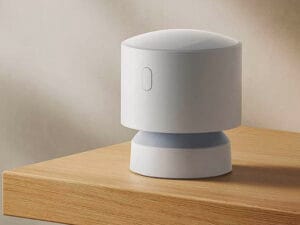
![]()
AliExpress | AliExpress | AliExpress![]()
N/A
*If links fail to open, try disabling your AdBlocker.


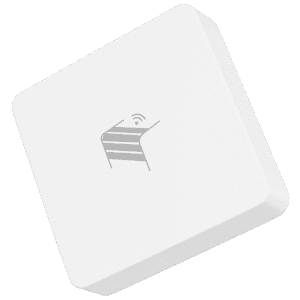
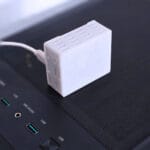

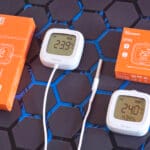


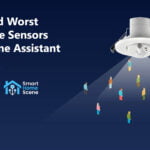

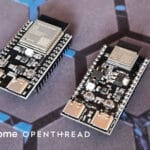

In my experience my bluetooth devices have higher quality and more consistent networking compared to my zigbee devices. And this is with just a usb bluetooth dongle connected to my home assistant. I do not need bluetooth proxies all over house. I even have BLE devices outdoors with ceilings and walls in between. They have never failed me yet for many years.
On the other hand, zigbee, despite being mesh and “self healing” never actually performs consistently. I experience all of them: random dropouts, commands not going through, devices not connecting back to the network (self-healing you say?), devices not “compatible” with each other in regards to routing, devices just dying or failing, regardless coming from more reputable brands like IKEA, or sonoff… the list goes on and on. And yes, I have read, studied and moved my entire zigbee network to another channel away from the most busy part of the 2.4ghz network around me based on your article recommendations, and I am pretty confident of my mesh network being spread out evenly, with dedicated repeaters around the house.
So I would say being Bluetooth is a huge advantage, not a caveat!
The thing is, if you have a temperature sensor that uses Bluetooth, losing one packet does not mean much. Sensors advertise their BLE payload about 10-20 times per minute.
But, if you have an automation dependent on a trigger like Motion or Presence, losing that first packet will result in a delay for sure. Next advertisement might be in 5 seconds, which is too much.
Do i understand it right. The cooldown time is 120 sekou d’s, before the sensor again is ready to detect
No, the 120 seconds cooldown is before it changes state to clear when no one is in the room. It detects presence immediately, no delays
Is it possible to reduce the cooldown time?
Is the cooldown time 120 sec before the sensor Will go to not detect, and close the light if i make a automation where no detection close the light
No, the 120 seconds cooldown is before it changes state to clear when no one is in the room. It detects presence immediately, no delays
What Morten asked that if it’s possible to write an automation which uses the the present/not present logic. The short answer is no, because the occupancy state not changes to not present immediately after you leave the room.
Thanks very much for your excellent review. I have a question:
Once the token is extracted, does the device run completely offline? Or the Home Assistant xiaomi BLE integration still regularly updates the status of the sensor to cloud? This is a privacy concern for me.
Yes, the device remains completely local by design.
Bluetooth in incapable of accessing your network if you don’t allow it too, like don’t attach it to a hub or connect to the device with your phone.
You can even remove it from your account in the app, it will work without issues in Home Assistant.
The Xiaomi BLE integration has an IoT class of Local Push.
Thanks for the write up. I picked up a couple to try out, and finally have them working.
I will say that the APP to get the decryption key seemed a bit flaky, sometimes it works others not. No feedback that you have entered characters in the password field didn’t help. In the end I had to run it on a second PC.
I then had an issue with the devices not showing up on the phone APP after adding them (asked for a bluetooth gateway) and the key failing in Home Assistant. But I had an old MI gateway from years back and once I added that they showed up and the key worked. They then didn’t show occupancy on the HA page, but pulling the battery and putting it back in cleared that.
(I wish they would use stronger material for the battery compartments, it is so easy to damage them trying to open them, but all the Chinese manufactures seem to do the same. This one opened using a 2450 battery as the coin, but I have a pin spanner and am considering drilling a couple of holes in each bit of kit to allow me to use that instead.)
They are running now, by default I’m getting 60 seconds from detected to undetected consistently on one and 65sec on the other. Not really an issue as I normally tell things to turn off after not detecting for a 60-120sec anyways. But you can go into the phone APP and change the timings for going to undetected from 15-120sec, and even when switched to 15sec the second device is 5sec behind resetting when they are both pointing at the same thing.
Thanks for sharing your experience!
It did not even occur to me to check the delays in the app, I simply used it for the key.
All in all, turned out to be a solid device. Hows the battery life for you?
Time for an update, had one in the backroom for about a month now controlling the lights when it’s low light. I’ve been very impressed, they’ve been triggered at least 5-10 times a day and the battery is still showing as 100%.
Had one operating in the bathroom as a trial and I think I now trust it enough to switch the bathroom light to a smart light too. I just need to decide if I should just replace the bulb with a Xioami bulb I have laying around or look for an LED dome that is rated for moist environments, there are plenty of cheap LED domes about but most of them seem to be TUYA which can be a pain.
Great to hear, mine has been working well to.
I kept it in the office even since the review, very reliable.
They have dropped another firmware update and added a ‘Fast Occupancy Check (beta)’ and a ‘Geek Mode’.
The Geek Mode adds Trigger Distance and Hold Distance in metres, and also ‘Interference Source Scan’ which it says ‘Automatically scans the space for interference sources to adjust and optimize sensitivity’ (whatever that means).
But it does look like you need a Mi Gateway to install the updates, I have one that I bought ages ago and have a spare mobile with no SIM that has APP setup on a Chinese server
I’ve been messing with mine for the last day or so and I’m pretty impressed so far. I have at least one BLE proxy per room (all with external rubber duck antennas), so I’m not worried about losing BLE advertisements. I haven’t tried it in any challenging environments (like near my 3D printer or in a room with a large fan) and I expect that it’d fall down versus an MSR-1/2 there since I can’t tune the gates. For detection in simple environments, I’m very pleased.
I’ll second that getting the key was a bit fiddly. The actual CLI utility worked really well for me, but the app was a big pain in the butt. I had a hard time registering an account in the right region (selecting Mainland China initially prompts for a phone number, but there’s a small text button that says “log in with password.” On that page, you can actually register for an account), and I _really_ struggled with getting the app to pick up on the sensor. In the end, I had to use the app to scan the QR code in the manual. That told me that I needed to hold the reset button until the front LED flashed 6 times which would trigger a factory reset.
Out of curiosity, have you seen any outdoor-rated presence sensors? I have a few uses where it’d be nice to have actual presence detection in a somewhat rugged area. I think I’d want a PIR setup like the Xiaomi’s to filter out animals and wind.
Thanks for your sharing,
for some reason, I couldn’t get the extractor working to retrieve the token. Is there anyone who can give me a pointers? Thanks
In terms of product. I had a little struggle to get the battery piece as it needs to use the battery to make a twist to open up (counter-clockwise) and it’s a bit hard to get it moving.
The instructions wasn’t too detail either. Need to use my research a bit to get it going
Use the CN server when making you account and retrieving the token. Should be set to Chinese mainland in the app
Thanks SHS,
I tried to use the app (iOS) to create a new account, when I choose “China” as country, it only allow phone number verification. Is there any way to change to email verification as I don’t have a “+86”. Is there any way to do that.
Thanks again
You should be able to create an account with an email, not number.
I don’t remember asking me for a Chinese number when I made it
I hit the same problem. I setup my account within the Dutch region using an email address. I logged into the app through by first selecting the Chinese region, and then using my email and password of the Dutch account. Apparently this did configure the app to connect to the Chinese servers and I was able to retrieve the key from the Chinese server.
Apparently it’s not where the account lives, but what region you point the app to, that counts.
Are you too stuck at two factor identification in the token extractor?
Can you disable it in the app?
I never enabled TFA, since it’s a testing account
It’s not possible to disable it, but I found a solution. Being logged in on the Xiaomi Mi account on the PC I run the tool on, did the trick. It then skips that two factor identification requirement since I’m is already logged in.
Now I need to get that battery compartment open…
Use a coin and really put your back into it
Thanks for yet another interesting find.
I was looking forward to play with it, but how on earth did you get the battery cover open? I’m tempted to drill holes like someone mentioned. Or maybe hot air or the freezer, will make the cover loosen up.
The token extractor tool is not very helpful. It displays a link and says two factor identification required. I read the troubleshooting on GitHub, but to no avail. Anyone else get stuck at that step?
I struggled with it as well. Used 2 5c euro coins (1 did not work, 2 stacked is right size) te open it up. That worked for me.
I think the manual actually suggests using a 2450 battery as the ‘coin’ which sort of makes sense, but yes I do expect to start drilling holes in these things (and the Aqara ones) at some point. I have bought a ‘pin spanner’ to do the job now.
Hi. Great review.
I decided to purchase one and test it out.
Bluetooth proxy enabled, > paired with Xiaomi Home app > popped up in discovered devices > fetched key and put it in Xiaomi BLE integration.
Issue I have i only have 1 sensor available being the illumination sensor, no occupancy & duration sensors.
Did you encounter this behavior in your testing?
Yes, you need to replace the battery with a new one.
I know it doesn’t make sense, just do it and all clusters will show up 🙂
I received my sensor today and have already spent half a day trying to add it to HA.
The easiest part was obtaining the BLE key (there were no issues at all, actually). The problem is that I have nowhere to enter it. The Xiaomi BLE integration detects the sensor but says that “it hasn’t broadcast anything for a while.” I’ve tried three batteries from the same pack, all with a voltage of 3.3V, but in HA, I only see the “signal strength” and nothing else.
I’m using a BLE proxy for the connection (ESP32-C3 + ESPHome BLE Proxy), testing everything on a fresh HA installation on a computer without any BT hardware (and since I can see two BT thermometers, I assume my proxy is working correctly).
I’m exhausted, so I’ll set it aside for now. The best presence sensor I have is an ESP8266 + LD2410, but it requires constant power. I bought this sensor hoping to get rid of wires, but so far, it’s only given me a headache. 😓
BTW, I have a Xiaomi account in Singapore (some of my devices only work there), but this sensor wasn’t detected at all. I had to create another account for China on a different phone, and only then did the sensor show up.
“Rubber Duck Debugging” always works 🙂
after another attempt everything worked; and i dont know what i did
but I am very disappointed in this sensor as a presence detector; I was sitting right in front of it and typing a review of the purchase for aliexpress on my phone and after some time it changed the state to “presence not detected” – I will not risk using it somewhere in the bathroom, for example, because after the first time the light is turned off, while she is in the shower, my wife will kick me out along with all my automations, from the bathroom (I will note that now my DIY sensor on ld2410 works there perfectly and the only problem is the unaesthetic power cable to it, since the sensor was added after the renovation of the bathroom)
Hello,
Thank you for the comprehensive guide.
I’m on the most up to date HA Version and when I add this sensor by going to Xiaomi, BLE, it auto discovers this device, doesn’t ask for the BLE Key, and auto adds it. The issue is it only shows one entity which is the signal strength. I have reset the sensor few times, replaced with a new battery, restarted HA, nothing changes that to show more entities. Kinda lost where to go from here.
I would suggest you check for a firmware update in the app first.
It must ask you for a key, it cannot be added otherwise.
So HA finally popped up for they key, maybe 10 min after adding it.
I also updated the firmware then added to HA.
Also, for me the performance is really poor. I have it sitting on my desk and it does not do update for hours. There is so much delay especially the sensor right in front of me on the table, I have tried moving it further around the room and no improvement whatsoever.
November 6, 2024
detected occupancy
11:37:23 PM – 25 seconds ago
cleared (no occupancy detected)
9:14:16 PM – 2 hours ago
not true since I have been in the room moving around since 9:30PM so it took almost more than couple of hours for it to update that I entered the room and occupied.
Try some manual tests first, to understand what the issue is. For example, put it in a drawer or something and note the time it takes to clear presence.
In my experience, this sensor does not have poor performance, quite the opposite. It’s quite impressive and is coded very good (combo with the PIR).
I will note, a fresh battery that you are certain is good is very important for this device. I found this out the hard way.
Let me know what you find out, I’m curious to see what the issue is.
I used a metal tin when messing around as I was unsure how well the radar will penetrate. Also very small movements will keep it live, so a small breeze on a curtain can be enough.
update:- recently updated HA to the latest version, and what a game changer to this sensor. It now works like a charm like so much better and my automation around the presence are robust as well. not sure what caused it to work but I’m impressed.
Did anyone update to the newest firmware? Unfortunately I didn’t take a screenshot before.
If so, is there anything new on HA after the firmware upgrade?
In any case this sensor works great for me. Really considering replacing all my motion/presence sensors with this model.
I just posted above about a newer new firmware –
Added a ‘Fast Occupancy Check (beta)’ and a ‘Geek Mode’.
The Geek Mode adds Trigger Distance and Hold Distance in metres, and also ‘Interference Source Scan’ which it says ‘Automatically scans the space for interference sources to adjust and optimize sensitivity’ (whatever that means).
But it does look like you need a Mi Gateway to install the updates, I have one that I bought ages ago and have a spare mobile with no SIM that has APP setup on a Chinese server
What software version do you have? My app shows the firmware version for this sensor: “2.0.1_0104 Current Version is up to date.” But I don’t have any additional features. Unfortunately, I don’t have a Xiaomi gateway.
Any hint/possibility of changing communication protocol for ZigBee in the near future?
No, I dont think it ever be possible.
It does not use Telink SoCs
Reading through this review and a bunch of others, left me confused.
In other words, what would you guys recommend?
I’m looking for a presence sensor to replace the motion sensors (aqara) i have.
Looks like i need something with PIR + mmWave. As i got lost in reviews dating back to 2022, what would be a good recommendation?
My needs:
Instant light on when in range.
Zigbee support (zigbee2mqtt)
Battery, as they are at places without outlets (old building)
The thing that bothers me the most with my current ones – long reset time of the sensor, i don’t need the light to be on 1+ minutes after no movement/presence. And i like to keep the light on as long as someone is present.
This one here sounds nice, minus the bluetooth, i would love to avoid the need of a bluetooth dongle, which might or might not have the range i need.
Big thanks in advance for anyone that can point me into the right direction of product to check out. (doesn’t has to be the least expensive one, i rather spend a few bucks more and get something i’m happy with).
Take a look at the Everything Presence Lite and Everything Presence One, they are both ESP32 based sensors that do the same as the one reviewed here, but add to Home Assistant much easier.
Great instruction. thank you!
does it support multiple areas like the Aqara FP2?
No, it does not.
Thanks for the great review and install instructions.
I bought four of them for my house and your help has been preciusless
Thanks!
Do you have the user manual or specifications? I need it to release it from customs
I don’t have a document, but there are the specs:
Name: Xiaomi Human Presence Sensor
Model: XMOSB01XS
Protocol: Bluetooth 5.0 (Bluetooth Low Energy)
Battery Type: CR2450
Battery Life: 3 years
Illuminance Sensor: Yes
Motion Detection: 6 meters
Occupancy Detection: 4 meters
Detection Angle: 130°
Operating Temperature: -10C° ~ 45C°
Operating Humidity: 0-95% RH
Dimensions: ⌀42.6×50.5mm
😕 I need a document with the wireless spectrum band.
thanks anyway
Do you have maybe the FCCID?
No, sorry
Considering it is not sold outside China probably no FCC ID.
All I could find via the manual in the APP is GB 4943.1-2022 which from a search appears to be a Chinese standard.
Publication of China National Standard GB 4943.1-2022
On July 19, 2022, the SAMR issued the new mandatory national safety standard GB 4943.1-2022. It will be adopted for CCC and CQC certification as safety requirements for AV and IT equipment.
I use this sensor with a d1 mini esp in HA and it works great.
Thanks for the review and the instructions on getting it setup.
I bought one to try after reading this article and it works great!
any idea if we can upgrade the firmware ? someone’s mentioned there’s a new firmware with more options? I don’t have a mi hub just HA
I din’t have a hub either, but you don’t need one. You can upgrade via the app only
I wonder about this from Xiaomi XMMWR01XS. Should be similar to FP2.
Yeah, I’ve been eyeing that one for a review too
Great review and great sensor. Thank you for this, you convinced me to buy one and in the end, I did. Overall, I am very satisfied with it. I just setup a few automations, let’s see how well they will perform.
A few points on which I struggled the most:
– opening the battery compartment was literally impossible for me. In the end, I pried so hard (with anything: a CR2450 battery, coins, buttons, a hex key, a big flat screwdriver, you name it) that I machined away the cut in the plastic, rendering it useless. This is when I decided to screw a 2 mm hole near the Mi logo. I now use a hex key to open/close the compartment without any issues.
– the pairing with the app (I am using iOS) worked well. However, I am completely unable to update the FW from the app (upgrade always fails). Do I need a gateway for that?
– I was unable to find the configurable options you mentioned in the app (time to switch back the occupancy, for example)
– extraction with the CLI tool worked, but I had to first log in on accounts.xiaomi.com (with 2FA) on my computer, then use the account ID instead of the user name in the CLI tool. This bypassed the 2FA request on the tool.
– apparently (though in hindsight it is quite obvious), long-pressing the reset button ALSO resets the BLE key. So, it is not a wise idea to do so after having extracted that.
– despite the fact that I installed a brand new CR2450 battery, it took Home Assistant at least 15 minutes to ask for a BLE key. No idea why. After that, all the sensors quickly showed up and now the sensor is as responsive as ever (pretty much instantaneous). I guess the take home message is: be patient?
Great review. Thanks.
Do you know what IP rating this sensor has? Thinking of installing one in a bathroom with a lot of humidity.
Thank you so much for this. I’m loving them! Replacing my very noisy Zigbee presence sensors with this one, since I’m running into issues there. Just one thing I noticed: You write that if you don’t see all entities, you should replace the battery. For me, just pulling out the battery and putting it back in again, was enough to get all entities.
Just got my hands on two of these, so far they are fantastic! no wires makes a massive difference, its smaller than i thought as well.
will have to see how the battery life holds out as mine are in some high traffic areas.
I was thinking of getting this Xiaomi sensor but is it worth when compared with
Tuya Zigbee Presence Sensor ZG-205Z?
Well, they are similar in performance but very different in communication protocol. It comes down to what you prefer, Zigbee or BLE
Price also seems to be a bit different.
I will check the promotions and see which one I get.
Thank you for your reply.
I have it set up in home assistant via esphome bt proxy and I also find the sensor but I cannot use tokken extracter toolset as cn account requires two factor authentication by mail
You so not need to make a CN account. You only need to set your own account to Chinese Mainland after you’ve created it.
This is found in Settings > Additional settings > Region.
So it can be your country initially
it worked, thanks a lot for the help 🙂
You’re welcome my dude!
Cheers and happy holidays!
Very interisting after reading your review on the Tuya ZG-204ZM. I see a lot of ZG-204ZM devices and I have one that must be ceiling mounted and runds of mains power.
Anyway, I have a few Shelly devices. The newer ones act as a BT proxy. I configured them in HA and now all my BT sensors show up directly in HA witouth the need of the manufacteres integration (works through “BT-Home” integration). Do you think this will work? I have several GEN3 devices that are able to act as a BT “receiver”.
Yes, Shellys are ESP32 so its the same thing. Don’t know about using BT Home though, I’ve never tinkered with it
Hello! Does anyone have any problems with these sensor being stuck on detected? I have two of them and both remain stuck on detected like 2 or 3 times per day. I have 2 shellyes at maximun of 3 meters of each sensors. They are updated to last firmware from the Xiaomi app. Any idea what happens?
I know this is an old post and you have probably sorted it or dumped them now.
But for future viewers, the radar is VERY sensitive, like micro movements sensitive.
I have one setup facing a door to light up if movement is detected, but if I leave a window open the radar will pretty much stay detecting all the time due to air currents moving curtains a little bit, a fan 5m away will keep detected, I even pointed one at the back back of a running PC and it seems the spinning rear fan is enough to keep it live.
When I first started messing with small radar detectors I used to put them in a metal tin in order to make sure they only detected in front of them.
Thanks!
I am using 2 for a few months, and I ordered more.
Nice note: There is no need for the key extractor. After pairing with the app, the mi ble integration offers to retrieve the key on its own by using the mi credentials.
That’s great to know, thanks!
Thanks for this hint. As I did not get the key extractor work (tried also to by-pass 2FA beeing logged to Mi Account the time using the extractor tool), I tried this, but without success, the mi integration in HA does not accept my credentials. account set to china mainland server, but region is set to UK, since no e-mail login is possible with region china.
I set the cool-down period to 10s in the Mi Home app, but it changes to non-occupied after 20s, not 10s. I’m checking this in HA.
Does anyone have the same issue? I want to use the shortest time possible, as I want the lights to go off as soon as the sensor is not detecting presence anymore.
How did you do so? I’m checking Mi Home app and I can’t see any option that I can change. Or do you have Xiaomi Gateway?
Your review convinced me to buy 1 for testing. I have had it installed for a while now but still having an issue with it clearing detection. I have run the interference scan but it still frequently gets stuck on detected and will not clear. this has happened a few times where logs show it was stuck on detected overnight. There are no curtains or similar that could be causing detection. It is also close to the Bluetooth dongle plugged in to my ha host.
Any ideas how to resolve?
Sadly, it’s quite challenging to pinpoint what is causing false positive triggers in mmWave sensors.
While false negatives are very rare (as opposed to traditional PIR), false positives can be more common.
I highly doubt the device is faulty, as I’ve been using it without issues in my office (never took it down).
I would start by checking the environment again (fans, curtains, PC case fans, other wiggling stuff) and then try to set the Bluetooth scanning without to larger interval (doubt it misses BLEs, but can happen).